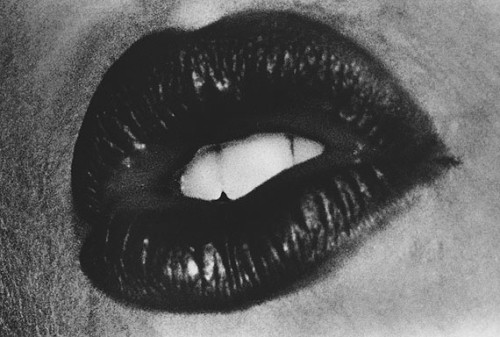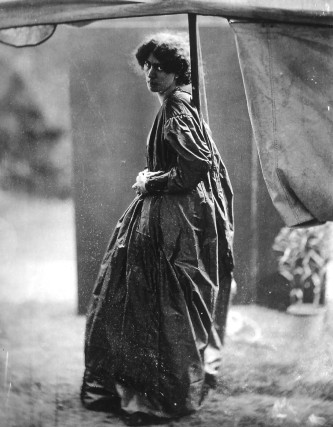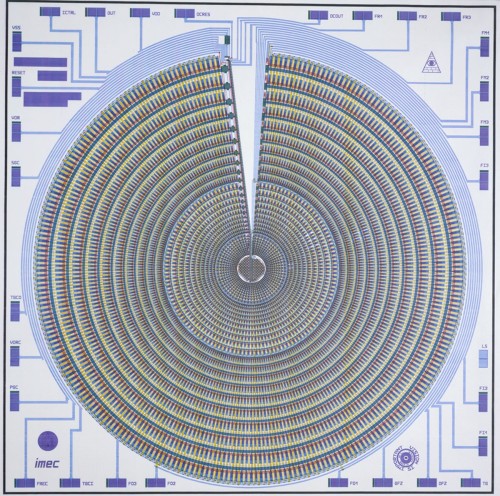
Daido Moriyama, photography.
“The ICTY’s endgame, as illustrated by the strategy designed to
prevent Slobodan Milosevic – and other defendants, elsewhere, in
future trials – from further exposing the institution’s political nat-
ure, provides a valuable lesson: there is nothing to be gained by
establishing ad hoc political courts, be they in Europe, Africa, or
anywhere else. When justice is used as an instrument to justify the
crime of aggression, and when ad hoc bodies do not even consider
aggression within their jurisdiction, when these bodies devise tools
to silence defendants who would have the audacity to raise that
supreme international crime, then, surely, there is no point in
calling what emerges from the exercise ‘‘international law.’’”
Tiphaine Dickson, Alexander Jokic
“… it remains difficult to call King Abdullah, by any stretch of the imagination, a great, let alone subtle “moderniser”. Public beheadings, the sentencing of Raif Badawi to a thousand lashes and ten years in prison for being critical of the state, and injunctions on the construction of non-Islamic places of worship within the country, suggest the workings of a distinctly anti-modern entity rooted in firm tribalism.”
Binoy Kampmark
On death of King Abdullah
“A similar incident was unearthed recently concerning the death of 50-year-old Darren Rainey, who died in 2012 at the Dade Correctional Institution. Rainey suffered from mental illness and was accused of defecating in his cell without cleaning it up. As punishment, guards forced Rainey to stand in a narrow chamber where they blasted him with scalding hot water and steam and left him to suffer for over an hour.
According to an investigative report, Rainey screamed, “I can’t take it no more! I’m sorry! I won’t do it again!” Fellow inmates reported hearing the guards answer Rainey’s pleas by sadistically asking, “Is the shower hot enough?”
The water was so hot that it made Rainey’s skin shrivel away from his body before he collapsed and died. When his body was found, his skin was cooked to the point where it was coming loose from his body, a condition known as “slippage.” The 911 recording, which would indicate that the killing was not treated as a homicide, was not saved. No autopsy was performed, and facility supervisors alleged that he died from a heart attack.”
Matthew MacEgan
WSWS
“Behold, the eye of the Lord is upon them that fear him, upon them that hope in his mercy.”
Psalm 33:18:
This week King Abdullah died. He was eulogized by all western heads of state. Tony Blair actually said “his people loved him”. It was also a week in which more suspicious inmate deaths were uncovered in the Florida correctional system. And, it was a week in which the head of CIA’s National Clandestine Services is retiring. Frank Archibald, the man who orchestrated the illegal kidnapping and transporting of Slobodan Milosevic to The Hague is now eulogized for such illegal malfeasance. None of these things are directly linked. And yet they are.
But before I try to do that, I wanted to discuss a couple things. First, Mark Rylance and the new BBC mini series Wolf Hall. One rarely gets to see Rylance on the screen, so to be able to watch his performance as Thomas Cromwell is something like essential. I realized as I was watching Wolf Hall that almost all of my interior narrative was connected to Rylance, and mostly to his eyes. I was creating a fuller history for Cromwell than was in the script (and its a very literate script), because of the very small nuances of Rylance’s performance. His walk, the rhythm of his side long glances, the cadence of his speech, the effortless projection of his voice. Even on film, his voice is remarkable. It is a good part of what I have repeatedly tried to describe as mimesis. When Cromwell mentions he was a soldier in Italy, it is there in every step Rylance takes. But it is not there, as well. It is not a *soldiers’ walk*. It is the walk of a man who used to have a soldier’s walk. Everything Rylance does is both there and not there. His walk is the echo or shadow of a walk we the audience never see. His walk is the pointer to the walk that is now gone.

Mark Rylance, as Thomas Cromwell. “Wolf Hall” (2015) BBC.
When Cromwell’s daughters die, Rylance’s minimalist despair is registered, again, by a voice that gently tells the servant woman to stop trying to revive the girl. Each thought seems articulated in Ryalance’s eyes. To continue to try to pretend they are not gone, is unbearable. Only two of the six episodes have aired so I base this on little, in terms of the actual show. But there is no need to not start the praising of Rylance now.
I’ve quoted this before… but it is a favorite quote and an important aspect of asthetics:
“There is something frightening lurks in the song of birds precisely because it is not a song but obeys the spell in which it is enmeshed. The fright appears as well in the threat of migratory flocks, which bespeak ancient divinations, forever presaging ill fortune.”
Adorno
One other film I think worth noting, from 2001, The Deep End. Directed by David Siegel and Scott McGehee. When people say something is ‘Hitchcockian’, it usually means anything vaguely suspenseful. In fact, The Deep End is perhaps the most Hitchcockian film made in the last twenty years. Tilda Swinton stands in for the James Stewart of Henry Fonda character, and the odd perversity of what is essentially a single mother making sense of her teenage son’s sexual orientation, and a world in which violence suddenly appears as if falling from the sky, is all treated with a blank neutral camera and minimalist performances by Swinton and the underappreciated Goran Visnjic, with a nice small turn by Raymond Berry. There are echoes of Patricia Highsmith in the story, set in the town of Tahoe City on the shores of Lake Tahoe. It is a minor very low key drama that really isn’t very suspenseful at all, to it’s credit; and based on the 1949 Max Ophuls film The Reckless Moment. But in an era of such grandiose hyper violence and jingoism, or just sentimental self congratulation, it was sort of a revelation to find this neglected bit of neo-noir.

The Deep End (2001). David Siegel & Scott McGhehee.
“Aldehydes also vary in smell. Low molecular weight aldehydes, e.g., formaldehyde and acetaldehyde, have sharp, unpleasant odors; higher molecular weight aldehydes, e.g., benzaldehyde and furfural, have pleasant, often flowery odors and are found in the essential oils of certain plants. Aldehydes are used for the manufacture of synthetic resins, e.g. bakelite, and for making dyestuffs, flavorings, perfumes, and other chemicals. Some are used as preservatives and disinfectants.” In fact Iso E Super came out of the IFF research and development department, and is a patented molecule. Last year Swedish perfumer Geza Schoen came out of with a scent called Escentric Molecule made up of ONLY Iso E Super. The other aspect, which also serves as metaphor for my purposes, is that Iso E Super *projects*. In expands the scent off the skin. The sillage and projection of Iso scents tends to be very high. Its a bit like a commerical for itself in that sense. But it never loses its synthetic and to me slightly disturbing quality of cheap imitation. What is the difference between cheap drug store counter after shave and *niche house* eau de parfume made up of close to entirely Iso molecules? But like annoying jingles, Iso has a persistent quality on the skin. As Allure magazine said…“the sweet smell of……nothing”. And..to be accurate
Iso E Super® is the trademark name for aromachemical 7-acetyl, 1,2,3,4,5,6,7,8-octahydro-1,6,7-tetramethyl naphthalene. Because of restrictions of certain animal derived ingredients, perfume houses have been reformulating brands using Iso E Super with less than satisfactory results (If you ever get the chance to sample a genuine 1947 Miss Dior, do so and then compare it to today’s vapid version). On some skins the desired transparency of Iso formulas more resembles mortuary embalming fluid or just those toners on old fashioned Xerox machines. And for many, the persistence is headache inducing. There is more on this at the very good Kafkaesque perfume blog.

Rudolph Lehnert, photography. “Ouled Nial girls, Algerian Berber tribe. 1904.
The point is that increasingly emptiness is equated with clean design, and contemporaneity — although I might argue these simple, I find boring scents, without development, reflect in a sense the Zombie formalism of painters like Lucien Smith, or the Chiat-Day blank affectless adverts, and then by further extension to the Robert Wilson and Philip Glass collaborations. This is the elevation of empty to the status of style code. Its an emptiness that REALLY IS empty. Those endless white gallery walls are just the fine arts version of Iso E Super. If I have found students incapable of following complex narrative, and if it seems audiences have been intellectually ground down to the point where The Reckless Moment is too daunting and Birdman or American Sniper is better, or that Robert Wilson is profound, or Marina Abramovic staring across a table has depth, then it follows that artists of the James Franco generation (and he is the perfect example) are going to make Iso E Super version of classics. As I Lay Dying, the Franco version of Faulkner, is the molecular synthetic copy of the real thing.

Jain Cosmograph, early 18th century.
As a last note on perfume. Nothing can provide a clearer example or proof of what I am saying than to make the effort to find some Middle Eastern premier perfume oils (Abdul Samad Al Qurashi perfumes are the quintessential example). These are are mostly Arabian aoud oils, and ambergris (which Id say only Saudi Sheikhs can afford) and musk. But they bear no relationship at all to synthetic versions of aoud or amber (Ambroxan, another patented synthetic). There is quite possibly no more profound example of the distinction between the West and the non West. The extraordinary beauty and depth of these oils is simply not comparable to Western perfumes. And I ‘like’ a lot of western perfume. These Arabian (mostly) oils, some with Cambodian agarwood and aoud are extremely long lasting, but also merge with skins oils and take on decidedly carnal and slightly impure secondary notes. One is made aware of the lurking Puritanism of even the Parisian bourgeoisie as reflected in Coco Chanel.
The migration of registers in aesthetic reasoning has taken place over the last forty years. It is a byproduct of the grotesque rise of marketing. The desire for clean lines in architecture, the Le Corbusier purification of the eye (even if he didnt really quite do that) and even the rise of fonts such as Helvetica, all shared a desire for cleaning up the over decorative and messiness of late 19th century arts. But there is another connection. One that goes back to the early 19th century, really. It was driven by, ultimately, evolution in housing and architecture, but it found a secondary engine in medicine and further by feminist concerns and to some degree tied in with socialism. The medical profession was interested in promoting healthier clothing, and women latched on to this as part of their already substantial resistance to fashion and restrictions of all kinds. This was an era of long mountain walks, mountaineering, bicycle riding and by looser fitting clothing. For women this was simply logical and part of an entire project loosening restrictions. By the late 19th century one sees the influence in the arts & crafts movement, and in the Pre Raphaelite group. Under this, aesthetically, was a mantra of *modern*. Progress, modernism, and the seeds of what became by the early 1900s a distinct ideology of building and style for architecture. Across all of this is a weird conflating (at times) of visual cleanliness and moral hygiene. Of optical purification and for a leveling of class boundaries. Henry Van de Velde was the great promoter of Art Nouveau, in all its clutter and messiness. Adolf Loos was the corrective.

Interior, Mackintosh House, designed by Charles Rennie Mackintosh. Original house 1906.

Jane Morris model. John Parsons photography, for D.G. Rossetti. 1865.
In any event my point is with the way in which a trend toward pragmatism in clothing, and optical purification in architecture, and in mostly socialist minded resistance to crass commercialism became part of and absorbed by the twin forces of Capitalist domination and Puritan/Lutheran/Calvinist morality; so that those white walls of Le Corbusier, descended from the Bauhaus and Loos and Gropius and van Doesburg, were to become the empty blankness of both narrative, visual arts, and thinking itself in post modernism.
“Dress reform is the very source of their argument. Architecture cannot subordinate itself to the effeminate domain of clothing design and maintain its macho logic of ‘mastery’ and ‘order’ and so on.”
Mark Wigley

Tristan Tzara house, Paris. Adolf Loos architect. 1925
Now, Le Corbusier looms as the most significant sort of insertion point for several arteries of thinking and aesthetic codes. His desire for white, his rejection of color was a rejection of barbarism, in turn linked to sexuality, femininity, addiction and lack of discipline. Color was louche. White was Spartan, pure, disciplined. It was also, architecturally speaking, a bit of pragmatism. The focus on outlines is heightened by the exclusive use of white.

Garth Weiser
So again, there is this Puritanism, this anti Orientalism. Of course, Le Corbusier only really ever used pure white once. His use of off whites and greys became *seen* as white, and in terms of the interiors, his palate included a good deal of burnt umber and ultramarine, and red. The point is that whatever ambivalence Le Corbusier felt about white, he clearly was aware of these associations. The post WW2 period was the epoch of appropriation, and so it was for the principled debates about white, walls, windows and roofs that took place between Loos, Le Corbusier, J.P.P Oud, Gropius, and others, by the 1950s something else was shaping aesthetics.
The stunning ascension of marketing meant that appropriation of style was a governing principle and the gaze was shaped in new ways, and blankness given new operational meaning. There was increasingly a simple draining of meaning that accompanied the clean lines and blank surfaces and planes. Its easy to see the places of rejection within this thrust, and also easy enough to see how sometimes those rejections were just as efficiently assimilated and turned into their opposite. There are minimalists, for example, looked at today who seem amazingly heterogeneous and anything but antiseptic. In narratives, there is a kind of silence achieved by writers like Franzen, whose endless verbiage I can’t believe anyone actually reads…but then that’s the point. Its white noise in the background. Its on 24/7. but you don’t really have to listen to it (except you sort of do). I’m not sure if even Pynchon isn’t to some degree a version of this. Then within these sub groupings, aesthetically speaking, one finds sub hierarchies. All of it essentially shaped by advertising and marketing. Activities became *styles*. Rebellion was sold back to the rebellious as *cool*, and so did almost everything else.

Trisha Donnelly
Adorno wrote that aesthetic value was the “capacity of the object to provide aesthetic experience when accurately and adequately apprehended.”But really, this means that the object makes possible an aesthetic experience. The viewer, the audience, must have the ability to have an aesthetic experience. Increasingly works of art are used for commercial purposes, even old ones. Their ability, inherent qualities of resistance to this are now being worn down by decades of appropriation to other purposes. There is running under these mechanisms of consumerism and manipulation a quality of Puritanical and repressed anger, and a growing cognitive atrophy.
The ideas Adorno expressed about artworks relationship to history; the promise of the artwork, the development of materials in that artwork that are provided vis a vis historical memory, have today seemed to reach a dead end.
“Every significant artwork leaves traces in its material and its technique. Pursuing these traces is the task of modern art – rather than just sniffing out what is in the air. It is the critical element that makes art concrete.”
Adorno

Roger Fenton, photography. Spent cannon balls, ‘vally of death’, Crimean War 1855.
Christopher Menke wrote, in his extended essay on Adorno and Derrida, that in Adorno’s discussions of Stravinsky and Shoenberg, Adorno singled out Stravinsky as reactionary because “these works stand in a relation of abstract, unmediated ‘self annulment’ to the historically given state of aesthetic material instead of in a relationship of determinate negation.” This is important because at that time, for Adorno, Shoenberg represented the last stage of dialectical progress. The point though is more to do with his criticism of Stravinsky, whose faux primitivism and nostalgia for archaic forms has since, through the hegemony of marketing, risen to the status of almost an ideal. In one way this is what ‘sampling’ is, and this endless appropriation of even recent material means that a solipsistic and ironic evaluation is almost the only evaluation left. Now this leads back to my first comments about this current news cycle. It does this through a relation to the never ending recycling of propaganda, a propaganda that has merged the realms of art, politics and culture. The public, in particular in the U.S., is fed an endless stream of not just propaganda, but simplistic almost simple minded ideas and stories. In a recent Silent Witness, a UK police show about forensic technicians and doctors, the crime involves a Russian billionaire. This provides endless dialogue about the “the corrupt Russian state and the gangster who is running it”. Meaning NOT the Russian billionaire, the actual gangster oligarch, but Putin, and the government of Russia. I am always curious as to the reasons for such writing. But I’ve come now to see it is simply the accepted position. One needs easily recognizable villains. The billionaire is rich, ergo he is appealing. He lives in a beautiful penthouse near the Palace, and he dresses in bespoke Saville Row suits, and the villains are thuggish sadistic hit men sent by the Russian state. This sort of material is standard today. The police are good, surveillance is good, and the rich are good. The public is exposed to this kitsch narrative for hours a day, often, while how many bother to read up on the history of Russian-American relations, or read up on the Balkans and NATO? Those who do are usually domesticated academics who read the vetted and approved (by the state) version of events.

Ezra Stoller, photography.
The contemporary psyche is one strip mined of differentiation in perception. It is only capable of the crudest appraisal of *entertainment*, and the reading of various artworks takes place within a narrowly abridged and contained concept of financial mediation and commodity validation. Mass culture is so pervasive, and its ideological insistence on affirmation, that its naturally bled into all artistic expression. The work of negation is logically harder to create, simply. Negation through a relationship with this new mass audience (gradually newer) turns negation into affirmation. The stamp of corporate dominated form and structure has subsumed even the language of criticism. Its this total system of neutralization. Now, when speaking of the contemporary psyche, really what is meant is the more affluent western white bourgeoisie. But not completely. And this is a tricky topic, but for the sake of the points I am trying to get at, I guess I can live with such generalizations for the moment. This draining of meaning, the compulsive repetition of the same, and consumption of image and its recycling (rather than producing image) is part of a psychological shift in the audiences of the West today. If the 1960s was the start of an intensified marketing strategy that targeted *youth*, the result has been to prolong the qualities of thought associated with adolescence. In socio-cultural terms the white affluent young coalesced around a cluster of factors now termed *hipsterism*. The University educated young were graduating into an economy that no longer had any sort of real employment for them, plus the obvious crippling student debt most incurred. But it is important to note that this cultural hermeticism and self branding, self commodifying in a sense, was not taking place in a vacuum. All these factors were products of the larger forces of advanced financialized capital, globalization, and the rise in militarism as the sole economic growth area. For this white hipster is in the end a relatively meaningless category. The increased inequality in the U.S. also saw certain psychological factors blanketing most of the population.

‘Porto House’, Álvaro Siza Vieira, architect. 2010
There has been a societal trend toward disinfecting or cleansing complexity in cultural matters. This coincided with prolonged adolescence, and with what Jonathan Crary described as the “paradoxes that are inseparable from shifting configurations of sleep and waking, illumination and darkness, justice and terror, and from forms of exposure, unprotectedness and vulnerability…the expanding non-stop life world of twenty first century capitalism”. Crary points to the changes in ideas of duration, of the pressures, sub-conscious perhaps, for continuous functioning. This constant demand to be available to the stimulus of electronic media, extends to non electronic interactions. When ideas of self are pegged to a time out of time, out of history, then memory loses efficacy. Freud’s ‘reality principle’ involves the child’s development in using words to begin a regulatory process of thought. To manage the unconscious in a sense. As Jose Brunner points out; “Freud’s metapsychological discourse refers to words not only as vehicles of signification, but also as elements which exercise power within the mind, which have the capacity to restrain and direct energies.”So today the pressures of psychic coordination have created individual uniformity of opinion while disfiguring further the mechanisms of mind. The political reality presented in mass culture is agreed upon as a line of least resistance. Its not, or rarely, even really thought about. And when it is, it is analysed in terms borrowed from this linear disinfected slate of undifferentiated stimulation. Marina Abramovic, as the perfect example, becomes popular by virtue of perfecting the loss of quality AS a quality. In fine arts the endless repetition of work on themes of identity, the Cindy Sherman simulacra of a simulacra sort of ‘appearing in my own movie or Vogue photo shoot’ to Greg Crewsdon’s puerile constructions of ‘movie’ moments, the constant selling of this as pertinent to other white college educated narcissists, often under an umbrella of multi culturalism. Empty is really really really empty. Its not multi cultural so much as non cultural, absent culture.

Deep End (1970). Jerzy Skolimowski, dr.
The clearing away of optical clutter corresponds to the suffocating of internal oppositions, the mental clear-cutting of all that might ripen or turn fetid or is too moist or pregnant with memory. In a sense this is a final stage of patriarchal domination, too. Cultural sensuality was avoided the better to partake of transgression at a distance, on one’s lap top screen.
For there seem to be two things going on psychically. One is the ‘brave new world’ catatonia, the blank autistic-like cultural emptiness, and the second is the hyper violent sadistic militaristic and punishing torture embracing other. For there cannot be a squeaky clean blandness without its shadow. All that repression, or erasure more accurately still is compensated for an acute aggression. One cannot smooth out disruptions without consequence. Feeding children various psychic medication in an effort to stop the appearance of childhood, and then insisting that childhood never end is going to create contradictions in the mind. To constantly emphasize the virtue of obedience and duty (how many Hollywood films and TV are themed around the idea of *duty*?), to encourage docility as a virtue, and to present a tepid flavorless form of *reasonableness* as maturity, can find visual expression in Koons, Lucien Smith, Alex Israel, or Parker Ito (more on this, though, in a second) or in the endless floating white planes of 90% of modern celebrity architects. Surfaces that resist dirt are surfaces that resist everything usually. Modern municipal building is focused on creating firstly dirt resistant and easy to clean anodyne uniformity. This is all part of a new hermeticism and the desire for a sealed world. That is my sense. The world shut off with that sound of a Mercedes C Class door shutting. It is a world view defined by the entire sensorium of extreme wealth. So the annexing of reality, or the appearance of reality by the gaze of the very rich is reproduced in shoddy versions on tablets and iPhones and lap tops. Internet scavenging of this desired eye of God, the eye of the extremely wealthy man or woman. It is really just the falling off of eyelash microbes and mites from the eye of God. That of the extremely wealthy. Reality for the very rich, or rather desire for the very rich is that of a removal of impurity, and a certain uniformity of experience. I want those broccoli spears cut EXACTLY as they were last time, Pierre. The world is to be controlled. The visual and olifactory and audial seamlessness desired is mirrored, usually, by an emotional deadness, an emotional resistance to dirt. Emotions as surfaces of white reflective hardness, on which nothing can be inscribed. For that would be graffiti of the mind.
Russian icon, late 19th century.
It is also worth noting that in the midst of the current discourse on abstraction in painting Ive noticed a gradual shifting of blame onto the artists themselves. In fact, for example, Jacob Kassay I think has done some really substantive work. I don’t know that Wade Guyton hasn’t also. The cynicism is there in many artists, but this is more about the art market, in fact. About the few highly influential collectors and galleries and auction houses that dictate visibility. It’s not even a market, per se. It’s a cabal, another example of this extreme restriction of power and control. And some additional blame is reserved for the professional art critic who mostly follows the important (sic) galleries and museum shows. How many critics seek out young artists? How many simply review shows they are told about, assuming that is if the invite comes from a recognized name gallery.
Finally, the pliable public today, the ones educated enough to read and know NATO bombed civilian Belgrade, but obedient enough not to question the authority of the U.S. state department version. These are often people who will be made uncomfortable if they go to a restaurant for dinner and see a homeless guy outside. WHY has the restaurant allowed this!?? The smooth operations of robotic daily life is disrupted. It is a psychic smudge on my brain. The shadow selves are the punishing, those who either have come to love physical abuse, cruelty, torture, or they are the passive aggressive bureaucrats that occupy one of those countless meaningless jobs that force people behind desks. The psychic wounds are divisions, and no amount of therapy or shopping can heal those. The death instinct is really division, separation, and from division comes rivalry and aggression and this is hell. An inability to experience difference means you cannot make connections and correspondences. The false unity of the shiny featureless surface hides the lack of real connection. Allegory and symbol are searches for lost unity, for at the very least a lost memory. Freud, like all mystics, all artists, recognize life reflected in symbols of ocean and desert and sky. For in those there is unity, not division. It is interesting as a final thought that the age of *identity* actually contains so little of the stuff.

The reckless moment. I saw it in a ckass, at the new school in their beautiful art deco cinema. I remember loving it, thd classic Minotaur noir. My favorite Ophuls is the Earrings of Madame de….I cannot describe how magical that movie is for me. I don’t know what these, shots, are called, the dollies where you see in somd window or down a hall following a character, then the view is obstructed as the character moves behind an pillar, wall……and the camera still moves parallel and picks up the character again through another window or doorway. I keep meaning to watch Le Plaisir, parts of which I have, seen with these wonderful dolly shots. In the reckless moment I recall rightly the narrative is more like that than the visuals. Tracking through a maze.
The perfume really has lost magic too.
ErsatZ everyyhing
Sorry for typos, typing on phone again!
Ersatz everything
Yes, that’s it, isn’t it?
ersatz everything. yes, the disenchantment of daily life adorno wrote. That is operative on several levels I think. But one of the attractions of going to so called developing countries….in thailand, or mexico, or Belize, or Morocco, or India is that magic remains, and even in many places in Poland I remember. Christmas markets in poland are amazing.. To shop in a souk, or those nightmarkets in bangkok, or market day in a south Indian town…;.its just extraordinary. In the US, I feel nothing when shopping. Or rarely. I used to like to get fresh honey from the bee guys up near joshua tree. But thats about it. Part of the magic is smell, and plastic covers smell as well as visual mediation, and everything feels distanced. The enchantment is gone. It is being killed off more every day.
Skopelos…this local honey like none you’ve ever tasted. And this local marzipan type thing. It’s hard, even to think how dfferent (i don’t want to go down that fashy road about, authenticity and massification) the complexity of the Syriza problem is…zizek swoops down like a sorcerer if fraud. But Syriza is not 100% ersatz. It’s a left bloc in the course of infiltration and cooperation by the forces if Ersatz, spectacle capital. Tsipras says fuck the sanctions the Varoufakis hastens to say “wwait! we’re not anything. We have no cobtent. WWe’re a shell, a simulacrum. Wre discourse, we can rewrite this.”
Sorcerer Of Fraud
@molly: But isnt that sort of in line with this draining complexity and nuance. And I think everyone suffers from this by the way. But a second thing….I see again and again how environmental concerns or issues are foregrounded and things like climate change are blamed for what is really just stuff that was caused by corporate and military polluters twenty years ago. But this is the age of three card monte in political rhetoric. So….on the one hand, the fascist reactionary authenticisty vs mass production claim is an appeal for more privilege for those already with it, and second, its TRUE….jesus, its true. Mass produced junk clogs our lives, our every breath. There are so many examples of appropriation of goods….for example: african soaps…common soap made with charcoal and plantain leaves and shea butter I think. ITs all over africa. Cheap. Great stuff, although odd to western tastes. Its now being served up as special elite and expensive….organic and whateverthefuckever …..but in fact it is organic and great stuff, but now the price went up 100%. Im rambling a bit here, but for the political version of this, yes, the Syriza people are already listening to Nurland and the West. But its like the triumph of good marketing, for leftists I guess. Never mind its not a socialist or left party in the sense we think of it. I dont know what it is, the party without qualities. The Musil party. .. and maybe thats not such a bad metaphor. So…one is caught all the time in this logic of mass culture from the West. Its so so pervasive. And the exits are blocked. See, thats the thing. Intellectually, in terms of philosophy or theory there is no exit. As soon as one escapes one finds oneself back where one started. Because every step outside contradicts your intention to go there. Its all very slippery conceptually I think. And partly this is due to marketing. The absorbtion of that grammar. We all speak to some degree with embedded irony, and like salesmen. And hence the articulation of important but often elusive details is ever harder. Its very hard to avoid.
Yeah I just meant to distance from the authenticity discourse about purity of v olk and dilution and all that crap
but its kind of iupside down’
where the fascists lamneted “authenticity” in modernity with massification (of humanity, that is democracy and equality, as well as of commodituies), we see in fact that it is the mechnaism of expropriation/…the telecom grid and the spectacle wrap a billion people in the network of wealth that is the surplus that is expropriated from the rest of humanity;’ their outside the netowrk of distribution doesnt make them freer and purer, just poorer, because they are caught in the network of exploitation. It is the massive wealth transfer…moveing the wealth from the imperialist to the core is moving all pleasure. Hochschild kind of crudely speaks of the “heart transplant” from south to norht — literally mothers, literally care is expropriated from the south to be used by the norht. Youth is transferred — the working to an early decreptitude and death of the planet’s poort allow the extension of the life of the norht, allow the surplus to do plstic surgery and eat healthily and live without stress.
of vcours there is the “south in the north”, imperialised, thoug not as helpless and crushed as the south in the south, and not as well off as a the north in the south.
so the depletion is not just that where capital goes life is drained of content and savour. It’s the way these massive thefts work and the redistribution of the stolen surplus., In the grid of distribution of hte surplus there is all the pleasure stolen from humanity. That it is also kind of tasteless is a trace of a much bigger crime than the decline in the quality of luxuries. But everything moves toward The Green Zone.
argh
+++They’re+++ outside the network!!!
Thats interesting. I think there are sort of two topics here. But…i know a lot of the ‘Black Lives Matter’ people talk about the theft of magic. Meaning enchantment partly, but that this is an aspect of their oppression — and I understand what they mean. Its siphoning off all this history and knowledge. Appropriating….but that terms means several different things. The appropriation is of memory, partly. Cultural memory. This giant electronic web , which is surveillance, and control, and also a passing on of a rewritten knowledge and history. So in a sense, the wealth being stolen now extends to a theft of something essential to being human. A siphoning off of community, of that feeling, and here is where the magic part probably enters. Within this draining of quality and memory, there is a destruction of body and interpersonal recognition. The world is denuded and what replaces it is this horrifying, HORRIFYING kitsch version of everything, and its always highly fascistic. From bad Hollywood jingoism to bad fascist journalists, to fake leftist crypto fascist Murdoch owned journalists, to smug white liberals….well, everything. The human space is occupied and this reaches into some primal mimetic grounding I think. But there is a counter trend, too. For increasingly there is a restoration of community in places left as dead…failed states sometimes….eventually reconstitute themselves. And its what one feels in many places of the south. This draining of wealth has taken place..or is taking place, but a new enchantment is growing up. Not always, and often disfigured in ways, but the empire is without question the sickest, morally and spiritually and psychoanalytically the sickest. American Sniper is part of that, the endless empty noise and verbiage and branding and shopping and its all driven by this soul deadening delusional manufactured reality. I mean does one think, honestly, that those billionaires with giant homes in the Hamptons or wherever, are happy? I dont./ Its not my experience of them at all. They are psychically depleted, I dont know, mental neuralgia or something. One senses something very wrong, truly sick in these people and I suspect this signals something terminal.
Speaking of ‘verbiage’ I often have to wonder if the commercial sphere and the contemporary ‘high brow’ sphere are more closely linked than some would like to think. On the ‘high’ end, you find a lot of what feels like manufactured ‘high art’, even if it’s funded and green lighted outside the primary avenues of distribution. This is especially the case on the international film festival circuit. Never minding American ‘indie’ cinema, I’m thinking of filmmakers like Haneke, Tarr, Reygadas, and Sokurov, or even Ceylan or someone like Arvo Part. At the end of the day, it’s all about accumulating cultural capital. Weerasethakul and Ceylan are “poorly neglected voices from the Third World” who nonetheless win Palme d’Ors, so Cannes can pat itself on the back for being “inclusive”. The reality is Ceylan is safe for bobo consumption when Upper West Siders are in the mood for some “culture”. Fassbinder never won a Palme, and this during a purportedly more tolerant era. Godard never won one. Not even Bergman did.
That’s not to suggest there isn’t the occasional “accident” where a worthy film just so happens to win the Palme d’Or, but hopefully you get my drift.
Ceylan and Weerasethakul may not be rich, but it’s almost part of the pose it seems. These are ‘serious’ artists, who ‘struggle’ to get distribution, so therefore their work is ‘consigned’ to festivals and cinematheques, and because it’s not properly distributed it must be important and radical. Proper distribution would ‘tarnish’ the image of ‘serious’ artist. At least Godard’s or Garrel’s struggle to get their films made and distributed feels far more sincere to me for some reason
@Remy………….yeah Id pretty much agree with that. The linkage between funding and visibility is obvious, but there is now a more entrenched but hidden network of associations that give one ‘cache…..everything is “marketed”. Niche markets are just as analysed as global markets. Everything is manipulated, all perception is manipulated. And its worth noting that nobody wins a palme d or who might actually offend. ITs all a sort of pretend controversy.
And the thing is these recent Palme d’Or winners whether that mean Weerasethakul or Kechiche are embraced en masse by all the modern-day leftists who are at least aware of their existence. Nevermind that the star of Blue if the Warmest Color is slated to be the next Bond girl, and I don’t mind Lea Seydoux, but still. Don’t dare speak ill of any “non-commercial” filmmaker from outside the “West”. Of course, figures who are genuinely marginalized in today’s world like Rivette, Garrel, and even Godard for the most part are nonetheless allowed to be discussed in a more tempered manner, because at the end of the day, they’re proverbial “dead white men”. It’s all part of the leftist dismissal of art and culture as bougie.